From stops along the Underground Railroad to modern-day museums honoring African Americans whose contributions helped shape this nation and the commonwealth, Pennsylvania has a rich legacy steeped in Black history and culture. Explore sites throughout PA that together tell the remarkable African American story of heritage, bravery, resilience, sorrow, and joy.
ART & CULTURAL CENTERS
1. August Wilson African American Cultural Center
Pittsburgh
A must-see destination, the August Wilson African American Cultural Center honors the legacy of the late Pulitzer-prize-winning playwright in Pittsburgh, his hometown and the setting for most of his plays. Boasting a wide range of dynamic exhibitions and educational spaces, the center has hosted thousands of talented artists and creative students since it first opened to the public in 2009. Celebrate the playwright’s legacy by visiting the center and exploring the many exhibits, including August Wilson: The Writer’s Landscape, the first-ever exhibition dedicated to the life and works of this award-winning playwright. Or attend one of the many events the center hosts, including the annual block party birthday celebration. Join the center this April to celebrate Wilson’s 80th birthday and honor the 20th anniversary of his passing.
2. African American Museum In Philadelphia
Philadelphia
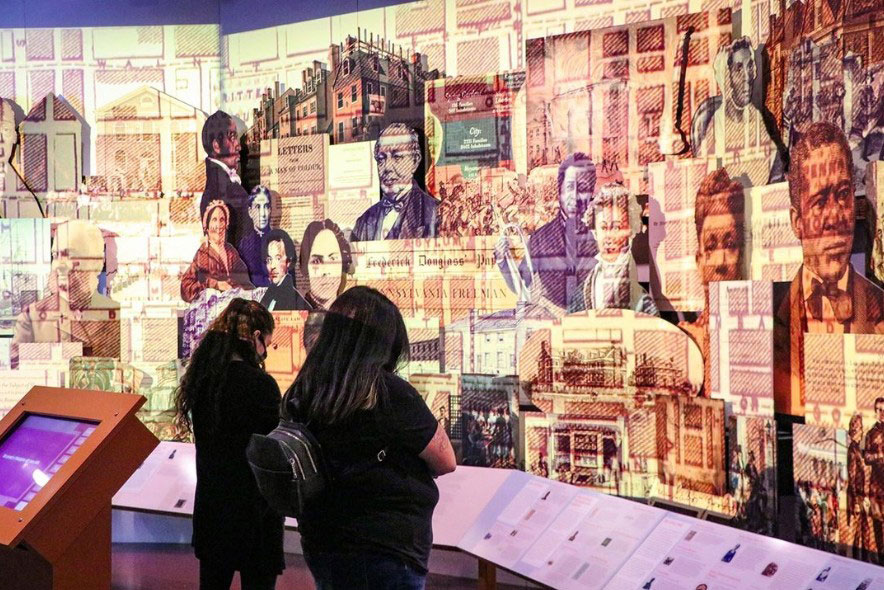
Experience the richness and vibrancy of African American heritage and culture at the African American Museum in Philadelphia. Centered around three main themes—the African Diaspora, the Philadelphia Story, and the Contemporary Narrative, the museum strives to honor and interpret the life, work, and major contributions of African Americans from pre-colonial times to the current day. Explore four magnificent exhibition galleries depicting African American family life, the Civil Rights movement, and achievements in arts and entertainment, sports, medicine, architecture, politics, religion, law, and technology. The museum offers an event calendar chock-full of activities for adults and kids alike; from movie screenings to meet the author opportunities to educational workshops.
3. Bellefonte Art Museum for Centre County
Bellefonte
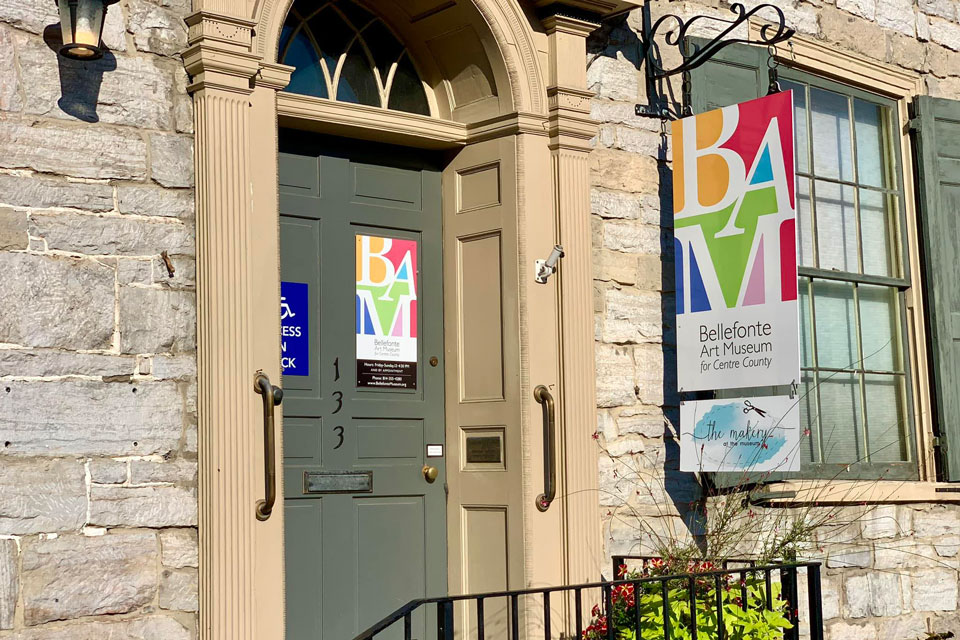
The greater Bellefonte area was a crucial stop on the Underground Railroad for enslaved African Americans bound for destinations in the Northeast, Midwest, and Canada. You can learn about the region’s role and history of the Underground Railroad at the Bellefonte Art Museum for Centre County and its permanent exhibit, Underground Railroad: A Journey to Freedom. The exhibit features biographical information and artwork including vignette sketches by Lino Toyos depicting the Underground Railroad and the courage and suffering of the enslaved African Americans, as well as details and stories about the local free African Americans and other local citizens who helped and supported the enslaved in their escape to freedom.
4. A Shared Heritage Trail
Erie
Erie's A Shared Heritage Trail is a marvel of historic sites, murals, and businesses featuring influential people from the region’s African American community from Erie’s earliest days through the 1960’s Civil Rights Movement and present day. The self-guided tour invites visitors to discover close to 29 landmark locations to explore along the driving route.
5. Fayette County African American History and Cultural Center
Uniontown
Newly established in June 2024, the Fayette County African American History and Cultural Center serves as a community resource dedicated to celebrating local African American history that was previously overlooked. In partnership with StoryJoy, an organization centered around telling and showcasing stories of BIPOC, the center hosts book readings, tours, history lectures, and public programming. The center honors two local trailblazers, William H. Palmer, who served as U.S. Ambassador to Togo, Malaysia, and Mauritius under Presidents Ford and Reagan and taught at George Washington University from 1990 to 2001; and Doris Rheubottom, a celebrated mezzo-soprano dubbed “The Queen of Swing,” who performed at iconic theaters and appeared in the 1932 film “Smash Your Baggage.”
6. Charles “Teenie” Harris Archive Gallery
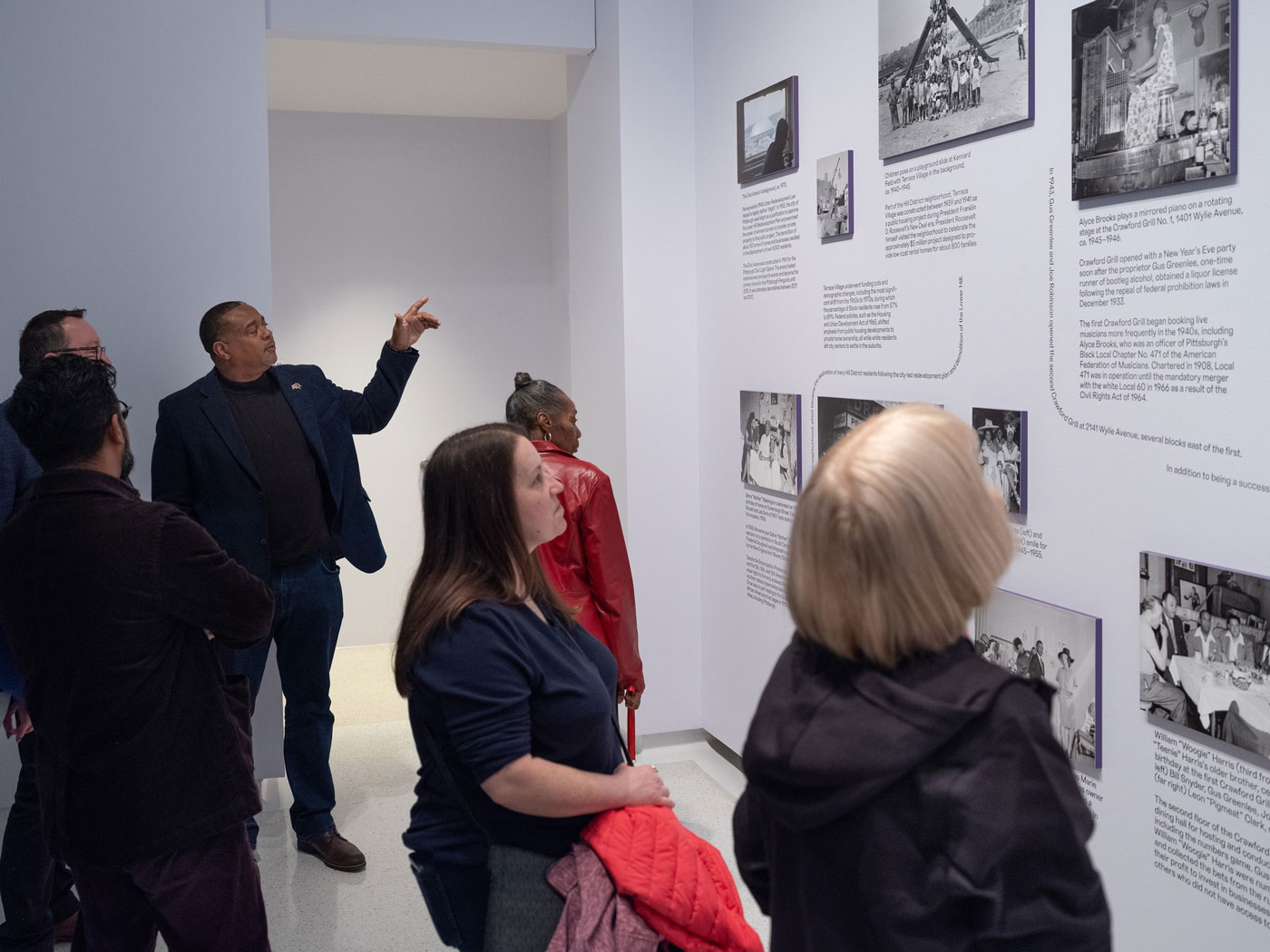
The one of the newer exhibitions at the Carnegie Museum of Art, the Charles “Teenie” Harris Archive Gallery showcases the extraordinary work of Teenie Harris, one of the most prolific photographers of the 20th century. His more than 75,000 photographs document the vibrant everyday lives, struggles, and triumphs of Pittsburgh's Black community during the mid-1900s, offering an invaluable visual history.
UNDERGROUND RAILROAD
7. Johnson House Historic Site
Philadelphia
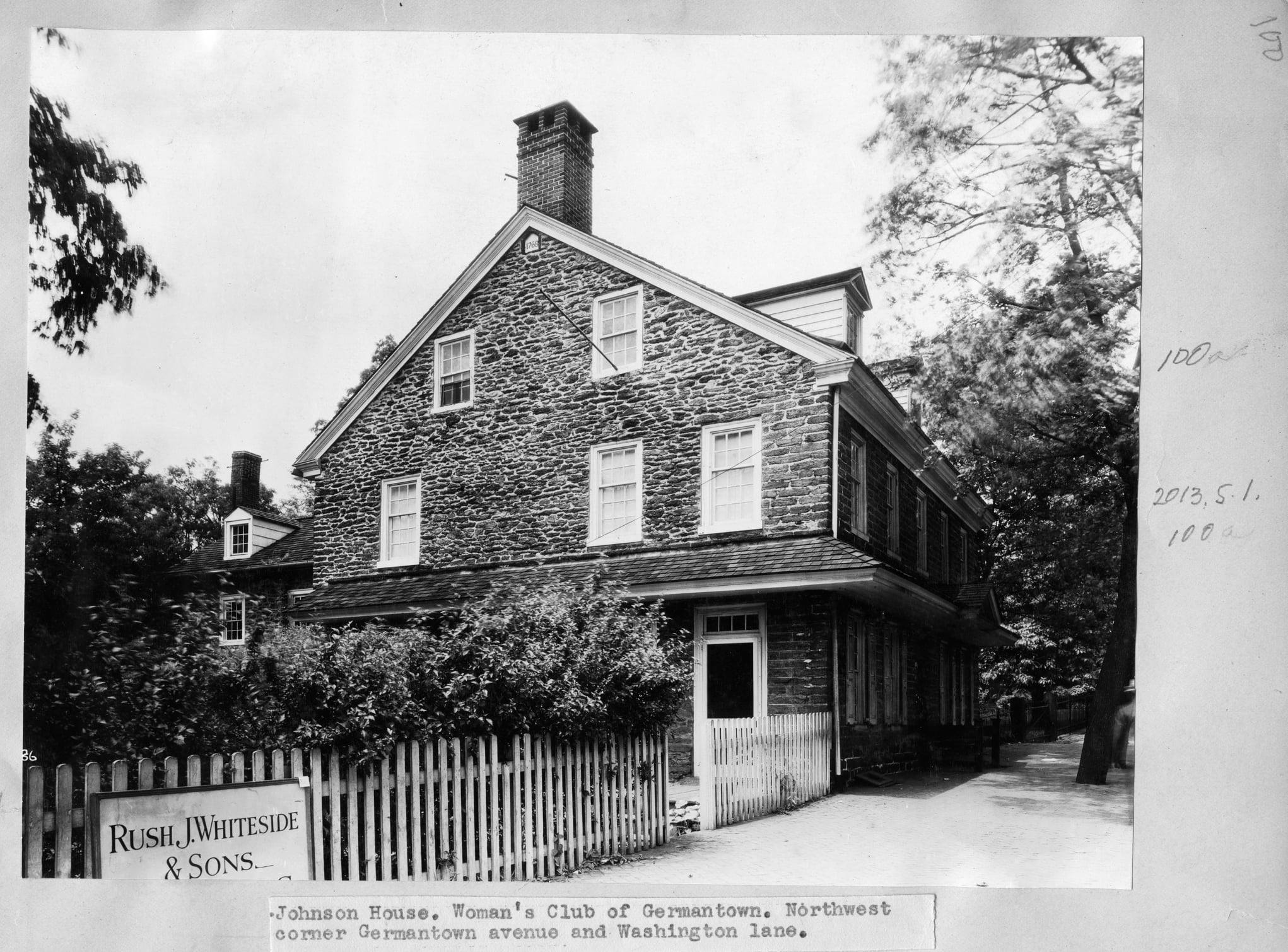
Built in 1768, the Johnson House served in the 1850s as a key stop along the Underground Railroad to secure a safe passage to freedom for many enslaved African Americans, as well as a meeting place for noted abolitionists including William Still and possibly Harriet Tubman. Now transformed into a museum and Center for Social Advocacy, you can gain an appreciation for the courageous decisions made by the enslaved to embark on a perilous, hope-filled journey to freedom and learn about the resolute men and women who labored for an end to the barbaric practice of slavery. Johnson House is open for indoor tours on Friday and Saturday by appointment only. Explore their calendar of events for special tours and workshops before planning your visit.
8. McAllister’s Mill Underground Railroad Site
Gettysburg
Now, McAllister’s Mill stands as little more than ruins on privately owned land, but in the 19th century, the mill was an important station along the Underground Railroad under the ownership of James McAllister, a loyal and committed abolitionist. The mill’s cog pit served as a secure and safe hiding place for hundreds of those seeking to escape their enslaved existence and where they would rest before the next stage of their arduous journey north to freedom. In 1836, the mill hosted a gathering pivotal to the formation of the Adams County Anti-Slavery Society, an influential abolitionist organization. While there is little left of the site today, you can view the Historical Marker at 1360 Baltimore Pike, Gettysburg.
9. Pennsylvania Wilds
Williamsport and Lock Haven
While the Pennsylvania Wilds region is known for its pristine woodlands, lakes, and rivers, the area also played its part in sheltering enslaved African Americans during their quest for freedom. A series of Underground Railroad sites include the Lock Haven home of Maria Molson, a free African American woman who often sheltered up to 17 enslaved people at a time who were all seeking freedom. The Maria Molson House remains a private residence, located at 19 East Water Street. Another stop on the Underground Railroad was the Williamsport home of Daniel Hughes who provided food, clothing, medical treatment, and transportation on his lumber boats to those fleeing enslavement.
10. Destination Freedom: Underground Railroad Walking Tour
Waverly
Learn about the complex history of a small Pennsylvania village and the role it played in the Underground Railroad and Civil War along Waverly’s Destination Freedom: Underground Railroad Walking Tour. Settled in the 1820s and located about 10 miles north of Scranton, Waverly became an important hub on the trail to freedom for the men, women, and children looking to escape bondage in the south. Destination Freedom offers self-guided tours, group tours, field trips, and public programming. The interactive tours explore the lives of the village's early settlers and those of the formerly enslaved and free born African Americans who came to call the village home and as a microcosm of the complicated nature of northern society during the 19th Century.
11. St. Paul A.M.E. Church
Bellefonte
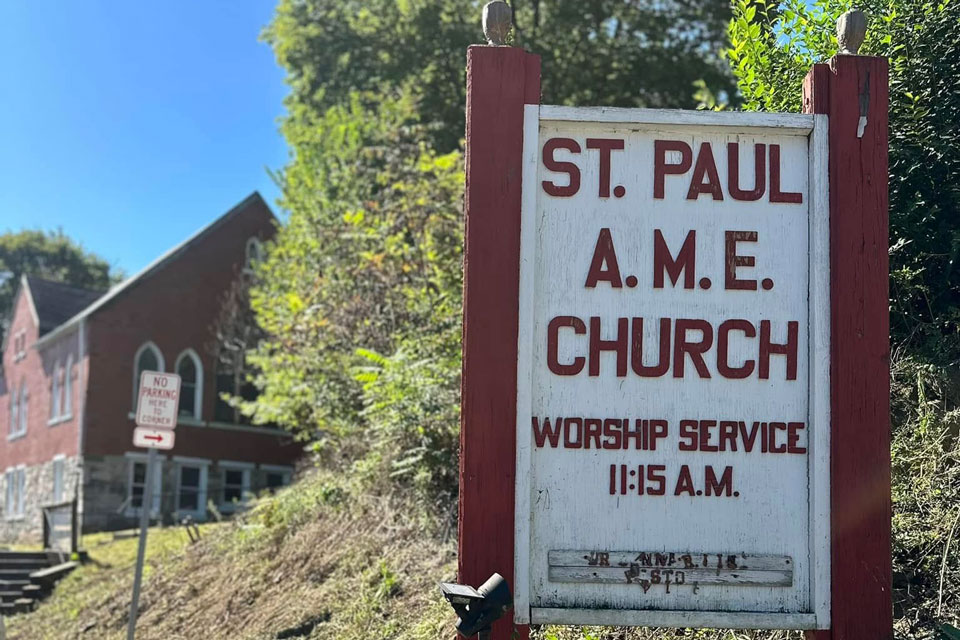
With its early ties to the anti-slavery movement, Bellefonte became a safe home for formerly enslaved and free men. This led to the establishment of St. Paul A.M.E Church on land donated by a Quaker named William Thomas. The African Methodist Episcopal church was a safe stop on the Underground Railroad during the Civil War. Throughout its history, the church served as a key meeting place for African Americans in the community.
12. Dennis Farm
Kingsley
The hauntingly beautiful Dennis Farm was originally settled by the family of Prince Perkins, free African Americans who moved to northeastern Pennsylvania from Connecticut in 1793. The historical grounds feature landmarks including the Perkins-Dennis Cemetery, the Prince Perkins Archeological Site, fieldstone walls, the farmhouse, and barn ruins. Dennis Farm served as a stop on the Underground Railroad, with men and women who died along their journey among the fifty souls interred in the cemetery.
13. Bethel A.M.E. Church
Lancaster
Held monthly at Bethel A.M.E. Church in the heart of Amish Country, you can attend the "Living the Experience" event to get a glimpse into Lancaster's involvement in the Underground Railroad. This creative, spiritual reenactment takes place the first Saturday of each month and offers a first-person interactive interpretation of the Underground Railroad experience in Lancaster and its impact on free and enslaved Africans in the 1800s. Stay after the performance to enjoy a Southern style meal.
14. William C. Goodridge Freedom Center and Underground Railroad Museum
York
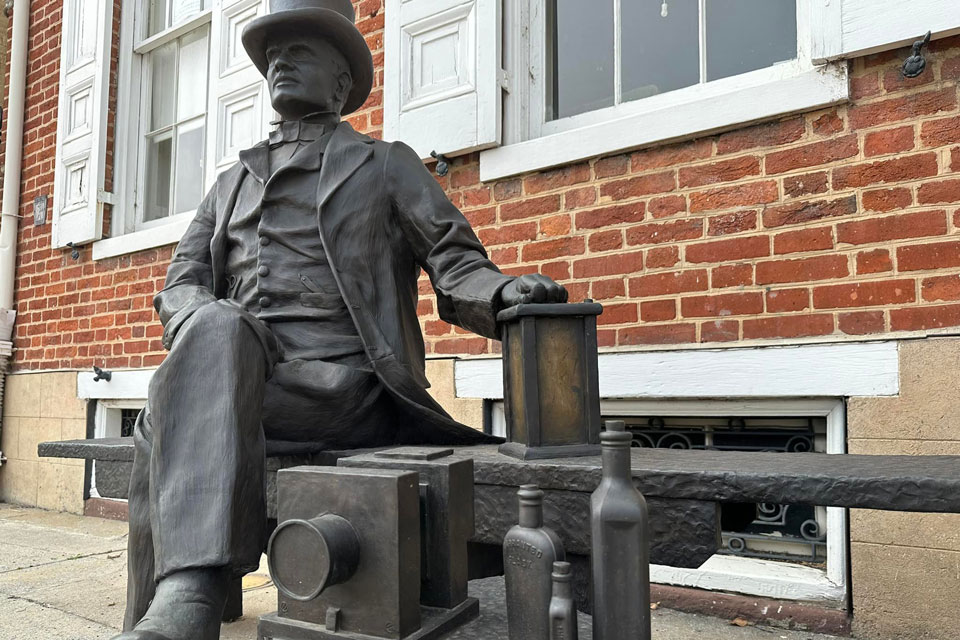
The Goodridge Freedom Center and Underground Railroad Museum honors William C. Goodright, The African American entrepreneur and local hero who hid freedom seekers in a hand dug hideaway under his kitchen in the mid-1800s. Tours are available at the center on Wednesday and Saturday, where visitors can learn about Goodridge’s life and legacy through exhibits and artifacts. A life-size statue of Goodridge, unveiled in 2022, stands in front of the museum as a tribute to his bravery and impact on the community.
HISTORICAL MARKERS AND TRIBUTES TO INFLUENTIAL BLACK AMERICANS
15. The Harriet Tubman Memorial Statue
Bristol
The Harriet Tubman Memorial Statue is a highlight among Bucks County’s Underground Railroad sites. The striking bronze statue, located on the edge of the Delaware River, depicts Tubman pointing toward the North Star, symbolizing her dedication to freedom. Surrounding the statue are ten stone markers, listing the names of ten African American families from Bristol who have direct family roots to Harriet Tubman or have ancestors who escaped from slavery. One of the most renowned Underground Railroad conductors, Tubman dedicated her life to freedom, risking her life to guide nearly 300 to safety.
16. Daisy Lampkin House
Pittsburgh
Daisy E. Lampkin was one of the most well-known champions of the rights of the nation’s minorities and women’s rights throughout the 20th century. Moving to Pittsburgh in her early 20’s, Ms. Lamkin quickly became an activist for women’s suffrage and the National Association for the Advancement of Colored People (NAACP). She was president of the Negro Women’s Franchise League in 1915, co-chair of the national NAACP's anti-lynching campaign in Pennsylvania in 1929, NAACP’s national field secretary from 1935 to 1947, and a member of the board of directors from 1947 to 1965, tirelessly working for the rights of African Americans and women. A marker recognizing her many achievements is located in Pittsburgh at 2519 Webster Avenue.
17. The Old Eighth Ward
Harrisburg
Take a virtual tour of Harrisburg’s Old Eighth Ward and its rich history as the heart of the city’s African American, Jewish, and immigrant neighborhoods until it was systematically demolished between 1919 and 1940 to make way for an expansion of the state Capitol grounds and so-called “beautification” project. The project destroyed the neighborhood, displacing hundreds of residents, businesses, churches, schools, and other mainstays of the community. A monument now stands adjacent to the State Capitol building commemorating the neighborhood, the 50th anniversary of the 15th Amendment, and the 100th anniversary of the 19th Amendment. A historical marker erected by the Toni Morrison Society commemorating the historic Old 8th Ward can be found near 405 Walnut Street.
18. Dr. Martin Luther King Jr. Plaza
State College
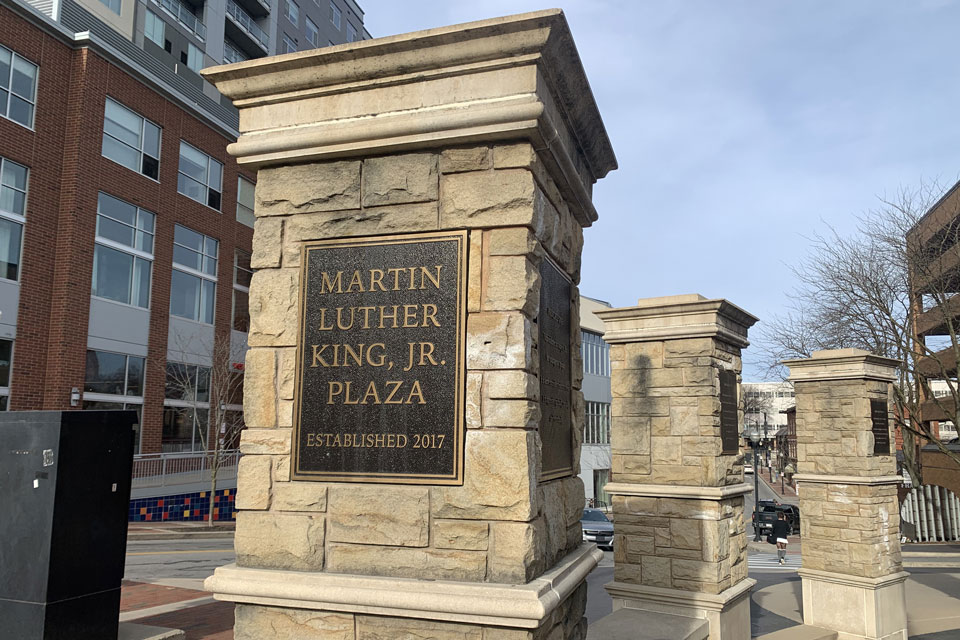
Located on South Fraser Street between West College Avenue and West Beaver Avenue, you’ll find the Dr. Martin Luther King Jr. Plaza. Dr. King visited Penn State’s University Park campus on January 21, 1965, speaking to an estimated crowd of 8,000 people in Rec Hall. Officially opened on the 54th anniversary of the 1963 March on Washington for Jobs and Freedom and Dr. King’s historic “I Have A Dream” speech, the site commemorates Dr. King’s legacy as an advocate for peace, equality, and justice. You can take a virtual tour of the Plaza that will give viewers an inside look at the markers signifying major events leading up to the Civil Rights Movement.
19. Patriots of African Descent Monument
King of Prussia
The Patriots of African Descent Monument was built to honor Black soldiers who served at the Valley Forge Encampment during the brutal winter of 1777-78. The monument features a granite block and a detailed bronze bas-relief depicting three Black soldiers, all wearing military uniforms and each with a musket in hand. On the back of the monument are the words, “In Honor of the PATRIOTS OF AFRICAN DESCENT who served, suffered, and sacrificed during the Valley Forge Encampment 1777-1778.”
20. Harry A. Roberts Plaza / King Memorial
Allentown
The only monument in the world dedicated to both Dr. Martin Luther King Jr. and his wife, Coretta Scott King, the Martin Luther & Coretta Scott King Memorial honors the King Family and their commitment to civil rights, world peace, and economic equity for all. The memorial statue portrays Dr. and Mrs. King, a civil rights movement leader, singer, and author in her own right whose activism advocating for equal rights for all continued in the decades following her husband’s death, marching together. Unveiled on January 17, 2011, the memorial is located at Allentown’s Harry A. Roberts Plaza on Union Street and Martin Luther King Drive.
21. The Roberto Clemente Museum
Pittsburgh
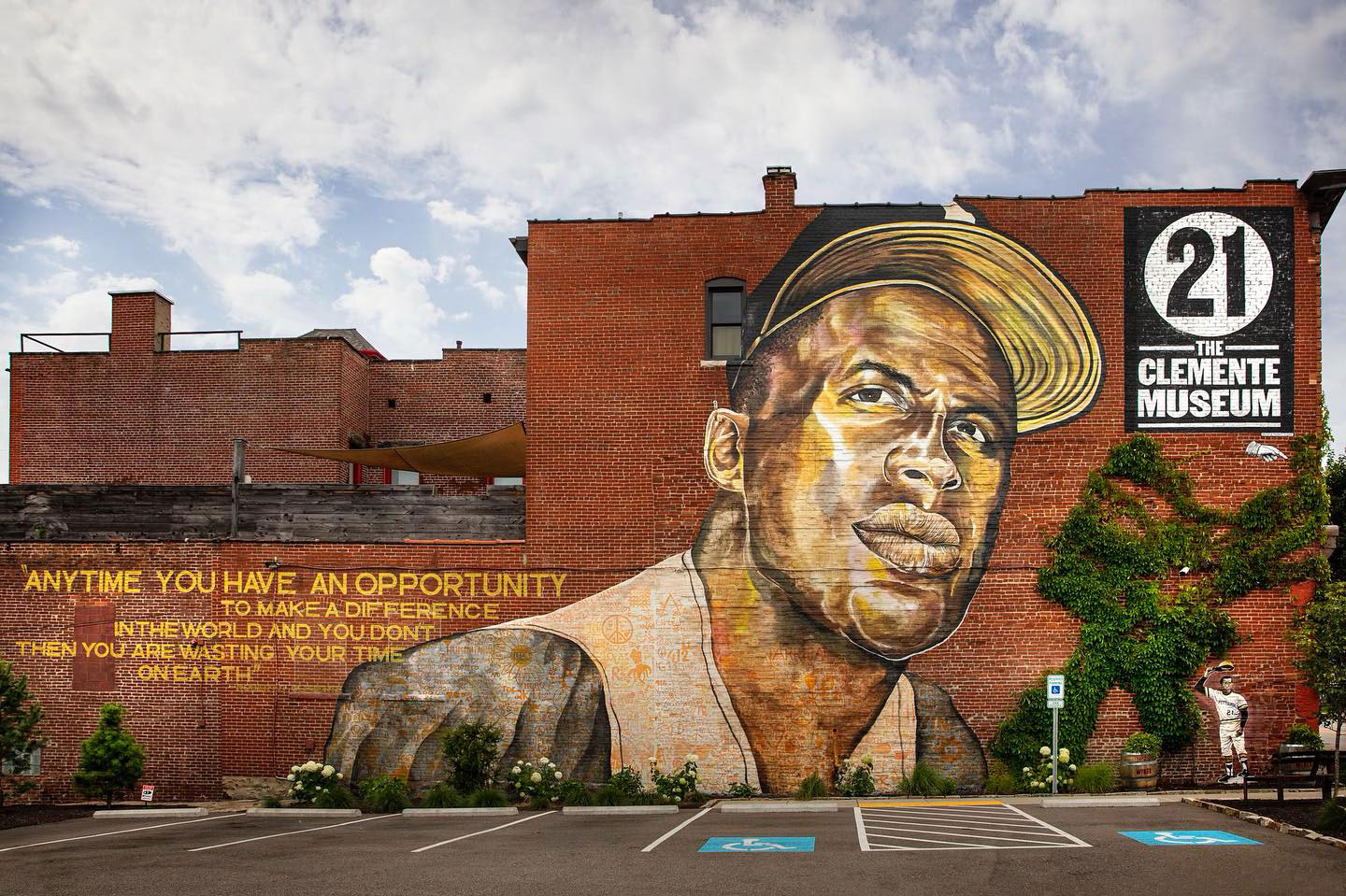
The Clemente Museum not only honors the life and legacy of Roberto Clemente, a trailblazing Afro-Caribbean baseball icon and humanitarian, but it is also widely known for housing the largest collection of Clemente’s memorabilia. Clemente’s impact extended far beyond the field, as he fought for racial equality, used his platform to uplift marginalized communities, and embodied the spirit of perseverance. You can celebrate this athlete’s legacy everyday at the museum in downtown Pittsburgh, but especially on Roberto Clemente Day on September 15.
HISTORIC SITES
22. Fairview Park
Greensburg
In 1945, a group of African American churches from Westmoreland and Allegheny counties known as the Monongahela Valley Sunday School Association established Fairview Park —Pennsylvania’s first and only Black-owned amusement park providing a safe and family-friendly entertainment complex for the African American community during segregation. At one point, the park had a roller coaster, merry-go-round, skating rink, swimming pool, softball fields, a petting zoo, and hot air balloon rides. While no longer an amusement park, the park’s 55 acres of beautiful green space continues to provide a fun and safe place for friends and family to gather at annual events throughout the year. In 2011, Fairview Park received recognition on the National Register of Historic Places.
23. John Brown House
Chambersburg
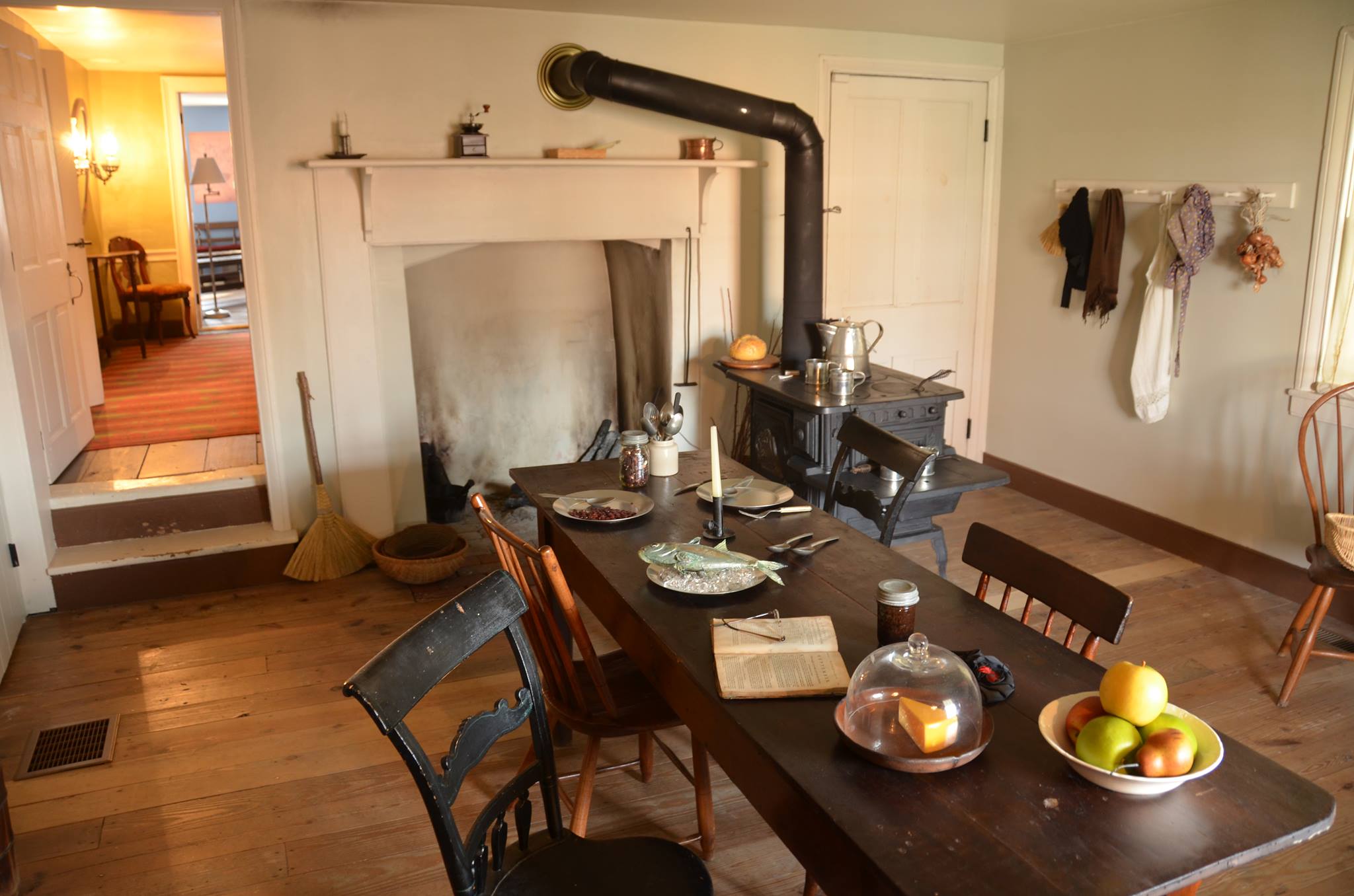
Noted abolitionist, John Brown, occupied the upstairs bedroom of what is now known as the John Brown House during the summer of 1859 as he prepared for his raid on Harper’s Ferry. To remain undercover, he assumed the name of Dr. Isaac Smith and claimed to be scouting the area as an iron mine developer. Several famous abolitionists visited him that season including Frederick Douglass and Henry Kagi. Registered as a National Historic Site and owned by the Franklin County Historical Society, the house is open for tours.
24. Little AME Bethel Church
Stroudsburg
Founded by former slaves, the Little Bethel AME Church (previously known as the African Methodist Episcopal Church) was a place where African Americans who were banned from other churches could come and worship. Constructed in 1868, the former church with its old red brick façade is currently in need of structural renovations with plans to convert the building into a dedicated museum that will chronicle the building’s history as well as the stories of the African Americans who worshipped there. Eligible as a Historic Site on the National Register, the museum tells the stories of those who contributed to the church’s legacy and made lasting contributions to their community and the nation.
25. The Lincoln Cemetery
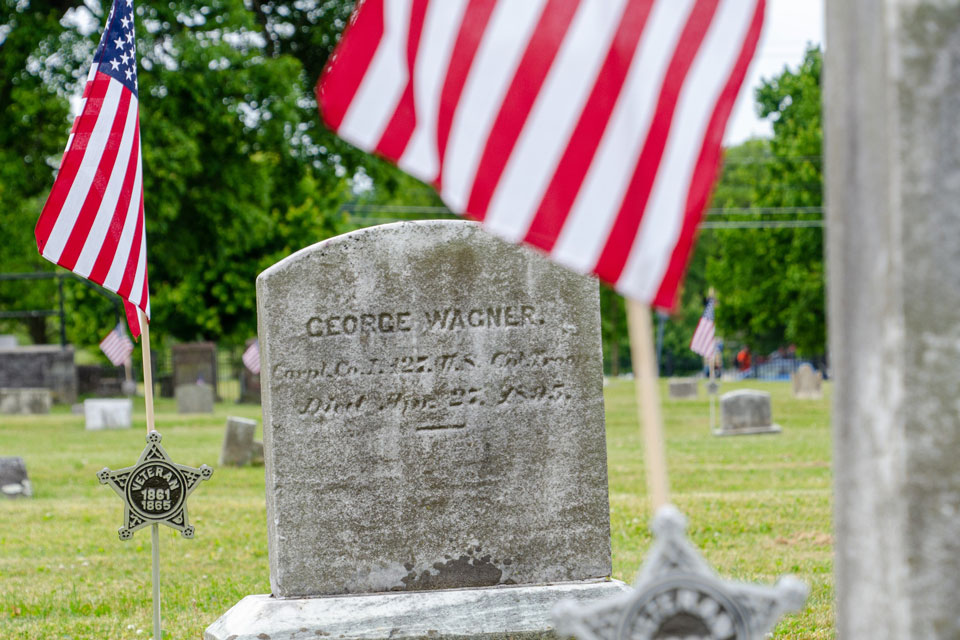
As Gettysburg’s only black surviving cemetery, Lincoln Cemetery is the final resting place for African American Civil War veterans and the local Black community during the 19th century. Denied burial in Gettysburg’s primary cemetery, these soldiers and citizens created their own sacred space, preserving their contributions to history and the fight for freedom. Although none of the U.S. Colored Troops fought at the battle of Gettysburg, the stakes of the pivotal moment in history were clear. The battle took place roughly eight miles from the Mason Dixon Line – eight miles from slavery. A few months after the battle, President Abraham Lincoln arrived and delivered his Gettysburg Address, reminding American’s that “all men are created equal.”
Looking for more inspiring stories of the African American experience and historic sites to explore in PA? Be sure to check out the Underground Railroad page on the VISIT PA website to learn more about the journey to freedom. Follow us on Facebook, YouTube, Pinterest, Threads, TikTok, and Instagram to stay up-to-date on even more great ideas and historic places to visit around the commonwealth. Don’t forget to sign up for our monthly PA travel e-newsletter so you never miss an update!
